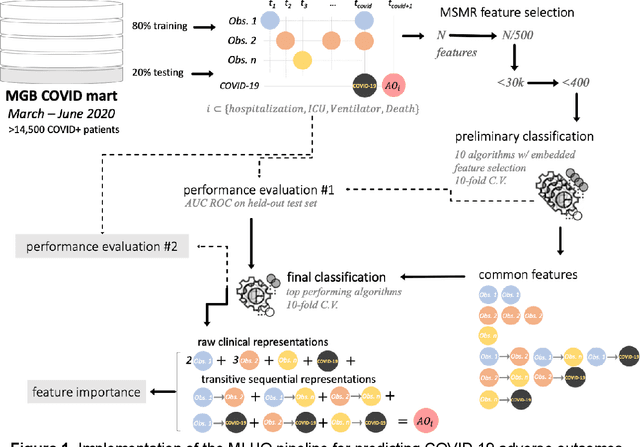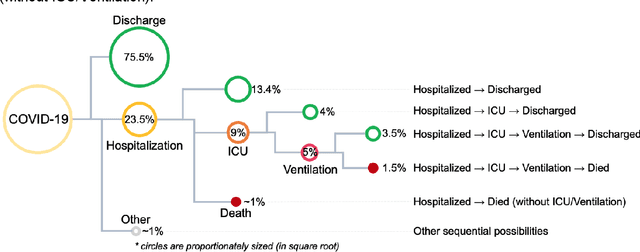Hossein Estiri
An Agentic AI Workflow for Detecting Cognitive Concerns in Real-world Data
Feb 03, 2025Abstract:Early identification of cognitive concerns is critical but often hindered by subtle symptom presentation. This study developed and validated a fully automated, multi-agent AI workflow using LLaMA 3 8B to identify cognitive concerns in 3,338 clinical notes from Mass General Brigham. The agentic workflow, leveraging task-specific agents that dynamically collaborate to extract meaningful insights from clinical notes, was compared to an expert-driven benchmark. Both workflows achieved high classification performance, with F1-scores of 0.90 and 0.91, respectively. The agentic workflow demonstrated improved specificity (1.00) and achieved prompt refinement in fewer iterations. Although both workflows showed reduced performance on validation data, the agentic workflow maintained perfect specificity. These findings highlight the potential of fully automated multi-agent AI workflows to achieve expert-level accuracy with greater efficiency, offering a scalable and cost-effective solution for detecting cognitive concerns in clinical settings.
tSPM+; a high-performance algorithm for mining transitive sequential patterns from clinical data
Sep 08, 2023Abstract:The increasing availability of large clinical datasets collected from patients can enable new avenues for computational characterization of complex diseases using different analytic algorithms. One of the promising new methods for extracting knowledge from large clinical datasets involves temporal pattern mining integrated with machine learning workflows. However, mining these temporal patterns is a computational intensive task and has memory repercussions. Current algorithms, such as the temporal sequence pattern mining (tSPM) algorithm, are already providing promising outcomes, but still leave room for optimization. In this paper, we present the tSPM+ algorithm, a high-performance implementation of the tSPM algorithm, which adds a new dimension by adding the duration to the temporal patterns. We show that the tSPM+ algorithm provides a speed up to factor 980 and a up to 48 fold improvement in memory consumption. Moreover, we present a docker container with an R-package, We also provide vignettes for an easy integration into already existing machine learning workflows and use the mined temporal sequences to identify Post COVID-19 patients and their symptoms according to the WHO definition.
Individualized Prediction of COVID-19 Adverse outcomes with MLHO
Aug 10, 2020



Abstract:The COVID-19 pandemic has devastated the world with health and economic wreckage. Precise estimates of the COVID-19 adverse outcomes on individual patients could have led to better allocation of healthcare resources and more efficient targeted preventive measures. We developed MLHO (pronounced as melo) for predicting patient-level risk of hospitalization, ICU admission, need for mechanical ventilation, and death from patients' past (before COVID-19 infection) medical records. MLHO is an end-to-end Machine Learning pipeline that implements iterative sequential representation mining and feature and model selection to predict health outcomes. MLHO's architecture enables a parallel and outcome-oriented calibration, in which different statistical learning algorithms and vectors of features are simultaneously tested and leveraged to improve prediction of health outcomes. Using clinical data from a large cohort of over 14,000 patients, we modeled the four adverse outcomes utilizing about 600 features representing patients' before-COVID health records. Overall, the best predictions were obtained from extreme and gradient boosting models. The median AUC ROC for mortality prediction was 0.91, while the prediction performance ranged between 0.79 and 0.83 for ICU, hospitalization, and ventilation. We broadly describe the clusters of features that were utilized in modeling and their relative influence on predicting each outcome. As COVID-19 cases are re-surging in the U.S. and around the world, a Machine Learning pipeline like MLHO is crucial to improve our readiness for confronting the potential future waves of COVID-19, as well as other novel infectious diseases that may emerge in the near future.
 Add to Chrome
Add to Chrome Add to Firefox
Add to Firefox Add to Edge
Add to Edge